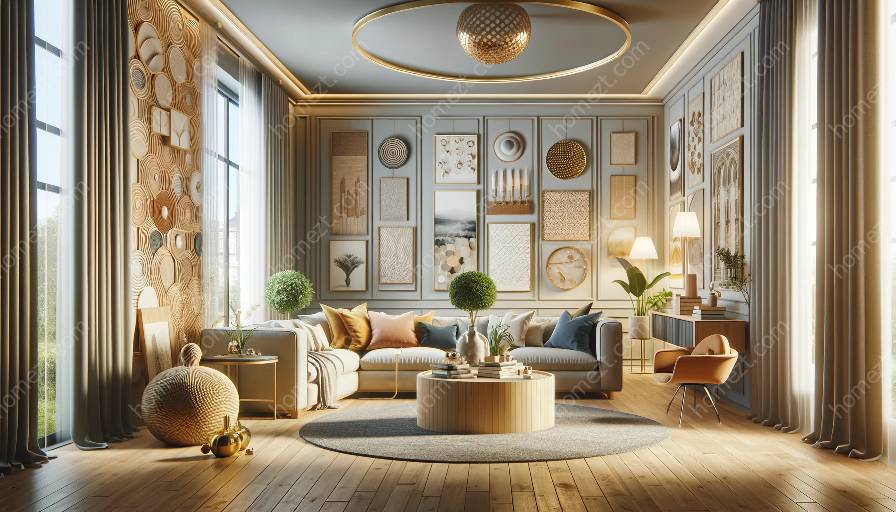Color theory is an essential aspect of interior design and styling. When it comes to wall coverings and paint techniques, understanding color theory can provide the foundation for creating visually appealing living spaces. Let's delve into the fascinating world of color and its coordination with wall coverings and paint techniques to transform your home.
The Basics of Color Theory
Color theory encompasses a range of principles and guidelines that help designers and homeowners understand the use of color in visual composition. In the context of interior design, color theory plays a crucial role in creating harmonious and visually impactful spaces.
Color is usually classified into three main categories: primary, secondary, and tertiary colors. Understanding the relationships between these colors is fundamental for achieving balance and cohesion in a design scheme.
Color Coordination with Wall Coverings
Wall coverings, such as wallpaper and wall murals, offer a versatile canvas for incorporating color into interior spaces. When selecting wall coverings, it's important to consider how they interact with the existing color palette of the room.
One of the key principles of color coordination with wall coverings is to create a sense of harmony. This can be achieved through complementary or analogous color schemes. Complementary colors, which sit opposite each other on the color wheel, create a vibrant and visually appealing contrast when used together. Analogous colors, on the other hand, are adjacent to each other on the color wheel and create a harmonious and soothing effect when combined.
Additionally, the scale and pattern of wall coverings can influence the perception of color in a space. Large-scale patterns and bold colors can add drama and focal points, while smaller patterns and subdued hues can create a more serene atmosphere.
Paint Techniques and Color Application
Paint techniques offer endless possibilities for incorporating color and texture into interior surfaces. From textured finishes to decorative painting methods, the application of paint can dramatically transform the look and feel of a room.
One popular paint technique that complements wall coverings is color blocking. This technique involves painting different sections of a wall in distinct colors to create visual interest and define separate areas within a room. When coordinating paint techniques with wall coverings, it's important to ensure that the colors complement each other and contribute to a cohesive design scheme.
Another approach to paint techniques involves the use of faux finishes, such as faux marble or woodgrain, to add depth and sophistication to walls. These techniques can mimic the appearance of natural materials and enhance the overall aesthetic of the space.
Creating a Unified Color Palette
When integrating color theory with wall coverings and paint techniques, the goal is to establish a unified color palette that ties the various elements of a room together. This can be achieved through careful consideration of hues, tones, and shades to ensure a harmonious and visually pleasing composition.
By selecting wall coverings and paint colors that adhere to a cohesive color scheme, the overall impact of the design can be elevated. Whether aiming for a monochromatic, analogous, or complementary color scheme, the coordination of colors across wall coverings and paint techniques can truly transform a space.
Practical Considerations and Styling Tips
For practicality and longevity, it's essential to consider the durability and maintenance requirements of wall coverings and paint finishes. High-traffic areas may benefit from durable and washable wall coverings and paint, while decorative techniques can be implemented in less demanding spaces.
Additionally, incorporating color through wall coverings and paint techniques should align with the overall styling and theme of the space. Whether aiming for a contemporary, traditional, or eclectic aesthetic, the choice of colors and application methods should reflect the desired ambiance and personality of the room.
Conclusion
Color theory and its coordination with wall coverings and paint techniques offer an exciting realm of opportunities for interior design and styling. By understanding the principles of color theory, selecting complementary wall coverings, and implementing creative paint techniques, homeowners and designers can transform living spaces into visually captivating and harmonious environments.


























